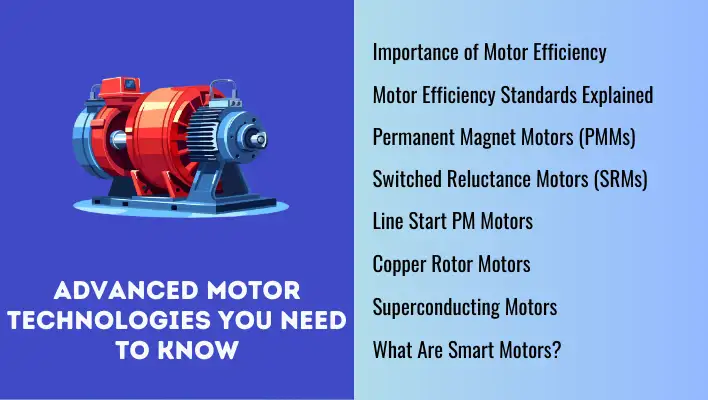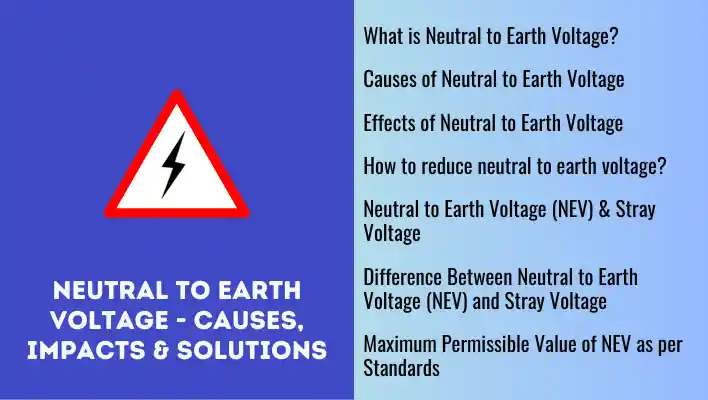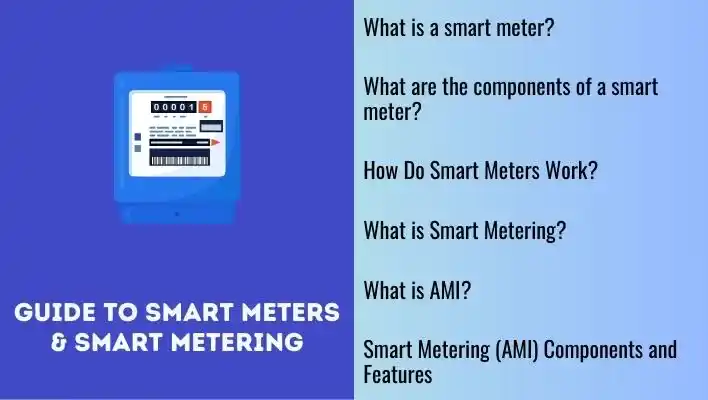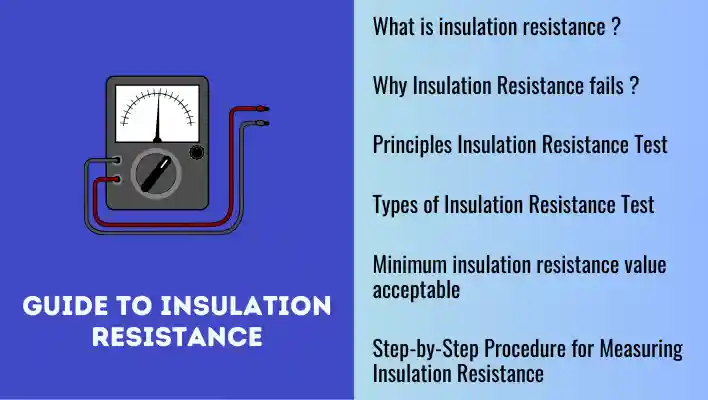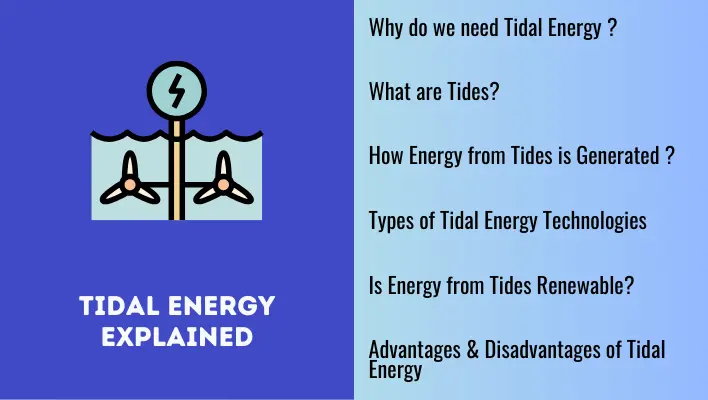AT&C losses are a critical concern for utility companies as they impact both financial viability and operational efficiency. Reducing AT&C losses is essential for improving revenue collection, ensuring the sustainability of the power distribution system, and providing reliable electricity supply to consumers.
Energy Manager Exam Question
A distribution company has taken initiatives to reduce Aggregate Technical & Commercial (AT & C) loss in their network. The energy supplied, received and revenue details are given below :
| Input energy | 60 MU |
| Metered Billed Energy | 43 MU |
| Average Billing | 3 MU |
| Amount Billed | Rs. 540 Million |
| Arrears collected | Rs. 80 Million |
| Amount received | Rs. 470 Million |
Estimate the following
- AT & C loss in % and revenue realized in Rs. /kWh
- Revenue loss per kWh and monthly loss, if the purchased energy cost is Rs. 8.10/kWh
Also Read: Energy Manager | Calculate Power Factor & Payback Period
Before going into the solution for the energy manager’s exam question regarding AT&C losses, let’s first understand the concept of AT & C losses.
What are AT&C Losses ?
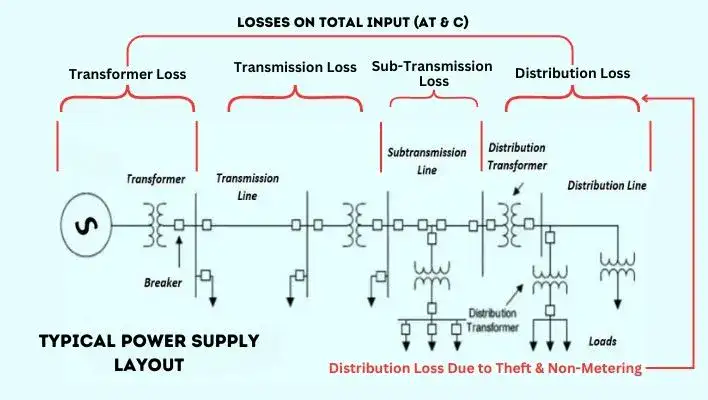
In the power supply system, electricity is transmitted from power plants to consumers through two phases: Power Transmission and Power Distribution.
Power Transmission involves the large-scale movement of electricity at high voltage levels from power plants to substations.
On the other hand, Power Distribution converts high voltage electricity at substations to lower voltages for distribution to private, public, and industrial customers.
In the electrical power supply system, the Power Distribution system is considered weaker than the Power Transmission system for following reasons:
- Retail consumers have varied expectations and different paying capacities.
- Distribution system has a vast network and managing it is a tough task.
- Maximum occurrences of theft, pilferage, and network losses are in the Distribution system.
- Society believes access to power is their fundamental right, rather than a profit oriented business.
- Subsidized and often un-metered power poses challenges for Distribution Utilities in terms of technical losses, billing, recovery, and consumption habits.
- Human intervention in metering, billing, and collection processes can lead to errors.
- Lack of infrastructure adds to the challenges faced by the Distribution system.
Because of the mentioned and other reasons, 95% of the losses are primarily because of the Power Distribution system, while 5% are due to the Transmission system.
In the past these losses were termed as T&D (Transmission and Distribution) losses, but increasing distribution losses highlighted the need to differentiate between the two as T&D losses focused only on heat dissipation, neglecting other aspects like metering issues, theft and other commercial losses.
To address this, electrical power supply utility and regulatory bodies introduced the concept of AT&C (Aggregate Technical and Commercial) loss. AT&C loss provides a comprehensive overview, encompassing both energy and revenue loss conditions in the power supply system.
Also Read: Step-by-Step Guide to solve Energy Managers Exam Question on Motor Energy Savings
Definition & Formula for AT&C Losses
AT&C Losses can be defined as the sum total of technical loss, commercial losses and shortage due to non realization of total billed amount.
The AT&C losses can be measured using the following formula
AT & C Losses = {1 - (Billing efficiency x Collection Efficiency)} x 100
Where,
Billing efficiency is an indicator of proportion of energy that has been billed (includes both metered and unmetered sales) to consumers w.r.t. energy supplied to an area. Billing Efficiency can be computed using formula provided below:-
[latex]Billing Efficiency\% = \frac{Total Unit Sold (MU)}{Total Input (MU)}\times 100[/latex]
MU=Million Units
Consumers are billed for their energy usage based on meter readings or assessed unmetered usage, following regulatory tariffs. However, some consumers tend to default on payments, leading to commercial losses as the utility cannot recover the full billed amount. Collection efficiency measures the proportion of billed amounts collected and can be computed using formula provided below:-
[latex]Collection Efficiency\% = \frac{Revenue Collected (Rs)}{Amount Billed (Rs)}\times 100[/latex]
Types of AT&C Losses
For an electric utility company, AT&C losses which are more predominant in Distribution system, can be categorized in two,
- Technical Losses
- Commercial Losses
Technical Losses
Technical losses occur due to various factors inherent to the operation and infrastructure of the electrical power system:
- Line Losses: As electricity travels through transmission and distribution lines, some of it is lost as heat due to the resistance of the wires.
- Losses in Transformers: Transformers also experience losses as electrical energy is converted from one voltage level to another. These losses include both copper losses (I²R losses) and iron losses (eddy current and hysteresis losses).
- Losses in Cables and terminal Connections: Poor quality or damaged cables and connections can lead to additional resistance and hence energy losses.
- Loss Due to High Impedance Faults: Faults in the system, such as high impedance faults, can cause additional losses as energy is dissipated in overcoming the fault.
- Losses in Re-wired Fuses/Jumpers: Improperly installed or maintained fuses and jumpers can lead to additional resistance and energy losses.
- Long Length of LT Lines and HT Lines: Longer transmission and distribution lines result in higher resistance and hence higher energy losses.
- Transformers located away from Load Centers: Placing transformers far from the load centers can result in higher losses due to increased distances for energy transmission.
- Overloading of System Elements: When conductors, transformers, or feeders are overloaded beyond their designed capacity, they can experience increased losses.
- Fixed Losses in Transformers: Transformers have fixed losses, which occur regardless of the load, contributing to overall technical losses.
- Sparking Due to ill-maintained Equipment: Poor maintenance of equipment, such as jumpers and isolators in substations, can lead to sparking and additional energy losses.
- Insufficient Reactive Compensation: Reactive power compensation, such as the use of capacitor banks, helps improve power factor and reduce losses. Inadequate compensation can lead to higher losses.
- Non-reconfiguration of lines and Distribution Transformers: Failure to optimize the configuration of feeder lines and transformers to minimize line lengths can result in increased losses.
- Non-usage of Energy-efficient Distribution Transformers: Using inefficient distribution transformers can lead to higher losses compared to more energy-efficient alternatives.
By addressing these factors, utilities can work towards reducing technical losses in electrical systems, thereby improving overall system efficiency and reliability.
Also Read: How to find apparent and reactive power of motor | Energy Manager exam question
Commercial Losses
Commercial losses in the electricity sector occur when energy consumption is not accurately measured, billed, and revenue is not collected. These losses stem from various discrepancies, including:
- Loss at consumer end meters: Discrepancies or inaccuracies in the measurement of electricity consumption at the consumer’s end. It could involve tampering with meters or other forms of meter manipulation to under report actual energy usage.
- Poor accuracy of meters: Some meters may have inherent inaccuracies or may degrade over time, leading to incorrect measurement of energy consumption.
- Errors in CTs / PTs: Current Transformers (CTs) and Potential Transformers (PTs) are used in metering to scale down current and voltage for measurement purposes. Errors in these transformers can lead to inaccurate meter readings.
- Overburdened CT: Current transformers are designed to handle a certain range of currents. Overburdening them with currents beyond their capacity can lead to inaccuracies in measurement.
- Un-metered connections: Instances where meters are not read regularly or where consumers are not metered at all result in unaccounted energy consumption and revenue losses for utilities.
- Faulty meter reading: Human errors or technical issues during meter reading processes can lead to incorrect recording of energy consumption, affecting billing accuracy.
- Inefficient billing: Billing processes that are inefficient or inaccurate can result in under-billing, where consumers are not charged for their actual energy usage, leading to revenue losses.
- Theft and pilferage: Deliberate theft or unauthorized use of electricity without proper metering and billing contribute significantly to revenue losses for utilities.
- Low collection efficiency: Inefficient collection processes, including delays in payment collection or failure to recover outstanding dues, result in revenue losses for utilities.
- Software errors: Errors or bugs in billing software can lead to inaccuracies in billing and revenue collection.
- Prolonged disputes: Disputes between consumers and utilities regarding meter readings, billing, or charges can lead to delays in revenue collection and potential revenue losses.
- Inadequate revenue collection: Insufficient mechanisms or efforts to collect outstanding dues from consumers result in revenue losses for utilities.
Addressing these discrepancies requires a combination of improved technology, better management practices, and effective enforcement measures to ensure accurate metering, billing, and revenue collection in the electricity sector.
Also Read: Energy Manager Exam | Co-generation power plant Numerical problem with solution
Measures to Reduce AT&C Losses
To minimize Aggregate Technical and Commercial (AT&C) losses, several measures can be implemented:
- High Voltage Distribution System (HVDS) Implementation: Distribution companies should transition to high voltage distribution systems, reducing reliance on Low Voltage Distribution Systems (LVDS) whenever possible. Restructuring existing LVDS networks is key to this effort, leading to loss reduction.
- Adoption of Energy-Efficient Transformers: Utility companies should prioritize the use of energy-efficient transformers, which boast 30% fewer no-load losses compared to conventional models. This shift aids in conserving energy and enhancing system efficiency.
- Ensuring Accurate Metering: Develop and execute a meticulous metering plan to guarantee the installation of meters with sustained accuracy. This involves selecting meters appropriate to the connected load and incorporating electronic meters equipped with features like Time-of-Day (TOD), tamper-proofing, data recording, and remote reading capabilities.
- Implementing Intensive Inspections: Conduct regular and thorough inspections of distribution infrastructure to identify potential inefficiencies and losses. This proactive approach helps detect issues such as faulty connections or equipment malfunctions.
- Enforcing Compulsory Metering/Average Billing: Mandate metering for all consumers and implement average billing practices to ensure precise measurement and billing of energy consumption.
- Utilizing Energy Audit Tools: Leverage energy audits as strategic tools to identify high-loss areas within the distribution system. By pinpointing and addressing these areas, utilities can effectively reduce losses and enhance overall performance.
- Combating Theft: Implement stringent measures to eradicate electricity theft, a major contributor to commercial losses. Utilize advanced metering technologies, enhance security measures, and impose strict penalties for offenders.
By implementing these measures, utilities can significantly reduce AT&C losses, leading to improved operational efficiency and financial sustainability.
Also Read: Calculate motor temperature rise from unbalanced voltage | Energy Manager Exam question
Solution to Energy Manager Question
Given,
| Input energy | 60 MU |
| Metered Billed Energy | 43 MU |
| Average Billing | 3 MU |
| Amount Billed | Rs. 540 Million |
| Arrears collected | Rs. 80 Million |
| Amount received | Rs. 470 Million |
We have to estimate the following,
- AT & C loss in % and revenue realized in Rs. /kWh
- Revenue loss per kWh and monthly loss, if the purchased energy cost is Rs. 8.10/kWh
AT & C loss in % and revenue realized in Rs. /kWh
The formula for calculating AT&C losses is,
AT & C Loss = {1 – (Billing efficiency x Collection Efficiency)} x 100
| Billing Efficiency % | [latex] = \frac{Total Unit Sold (MU)}{Total Input (MU)}\times 100[/latex] |
| Metered Bill Energy & Average Billing is considered in as sold units, Therefore, | [latex] = \frac{(43 + 3)}{60}\times 100[/latex] |
| Billing Efficiency | = 76.66% |
| For Collection Efficiency % | [latex]= \frac{Revenue Collected (Rs)}{Amount Billed (Rs)}\times 100[/latex] |
| Arrears will be subtracted from the Amount received. | [latex]= \frac{(470-80)}{540}\times 100[/latex] |
| Collection Efficiency | = 72.22% |
An arrears is a term in law referring to a portion of a loan that has become overdue due to failure to make the required payments. It represents the amount that remains unpaid from the due date of the first missed payment. For instance, if someone fails to pay their electric bill, the electric provider may disconnect their electricity within a few weeks.
| ∴ AT & C Loss | = {1 – (Billing efficiency x Collection Efficiency)} x 100 |
| = 1- (0.766 x 0.722) X100 | |
| ∴ AT & C Loss | = 44.69% |
| Revenue realized in Rs/kWh | [latex]= \frac{Revenue Collected (Rs)}{Input Energy}[/latex] |
| [latex]= \frac{(470 – 80)}{60}[/latex] | |
| Revenue realized | = 6.5 Rs/kWh |
Revenue loss per kWh and monthly loss, if the purchased energy cost is Rs. 8.10/kWh
| Revenue loss per kWh | = Energy purchase cost – Revenue Realized |
| = Rs 8.10 – Rs 6.5 | |
| Revenue loss per kWh | = Rs. 1.6 / kWh |
| Monthly Revenue loss | = Input energy x Revenue Loss |
| = 60 MU x 1.6 Kwh | |
| Monthly Revenue loss | = Rs. 96 Million (9,60,000,00) |
Also Read: How to find 3-phase AC motor parameters? Energy Manager exam question.
FAQs
How do AT&C losses impact the power sector?
AT&C losses affect the financial viability of utilities by reducing revenue collection and increasing operational costs, ultimately leading to higher tariffs for consumers and financial strain on utilities.
What are the main causes of AT&C losses?
The main causes include technical inefficiencies in the distribution system (such as transformer losses and line losses) and commercial issues like theft, meter tampering, billing errors, and non-payment of bills.
How are AT&C losses calculated?
AT&C losses are typically calculated by comparing the energy input into the distribution system (measured at the generation or transmission level) with the energy billed to consumers, taking into account technical losses and commercial losses.
What role does technology play in mitigating AT&C losses?
Technology solutions such as smart meters, distribution automation systems, real-time monitoring, and data analytics can help utilities identify and address losses more effectively, improve operational efficiency, and enhance revenue management.
What initiatives are governments taking to address AT&C losses?
Governments often implement policies and regulatory frameworks to incentivize utilities to reduce losses, encourage investment in infrastructure upgrades, promote energy conservation measures, and strengthen enforcement against theft and non-payment.


